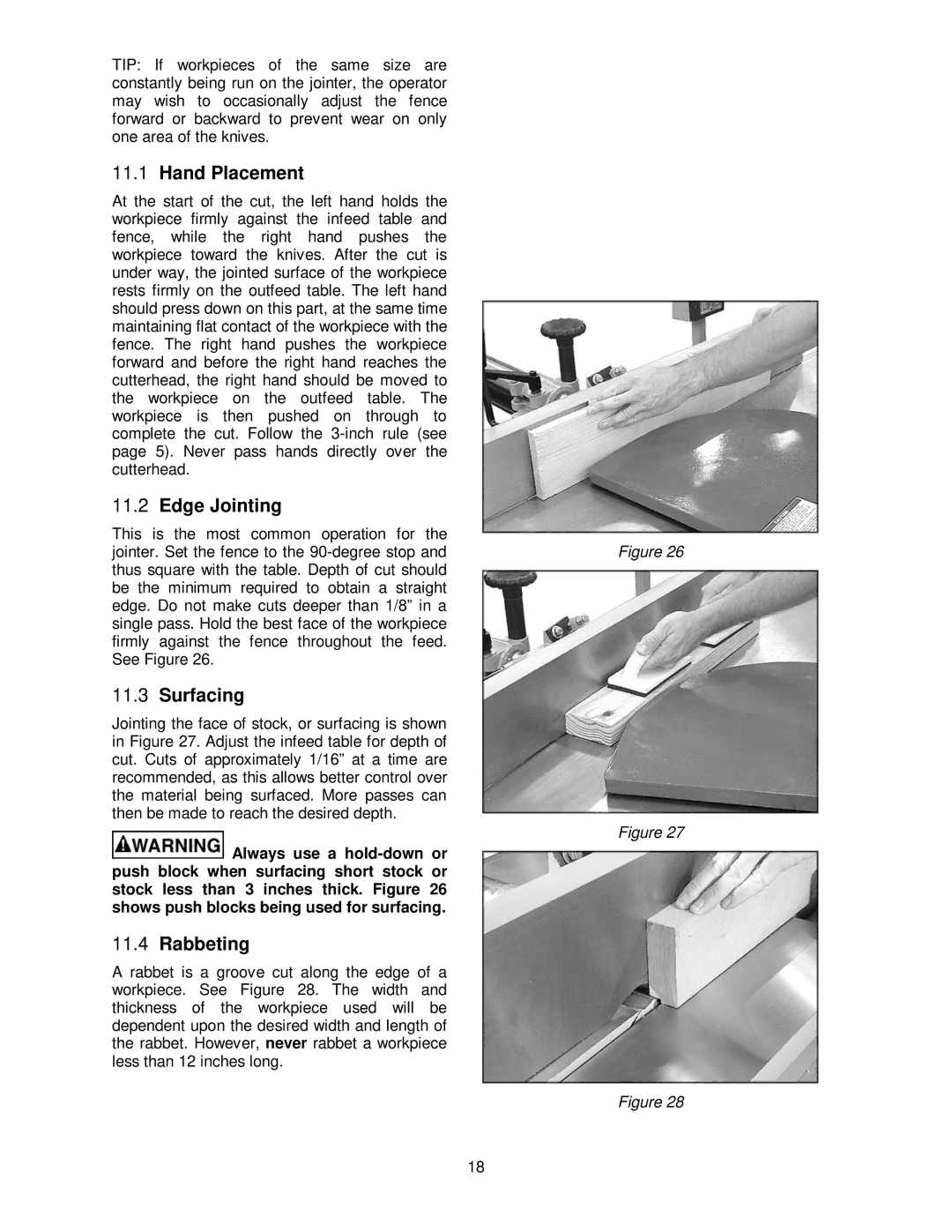
TIP: If workpieces of the same size are constantly being run on the jointer, the operator may wish to occasionally adjust the fence forward or backward to prevent wear on only one area of the knives.
11.1Hand Placement
At the start of the cut, the left hand holds the workpiece firmly against the infeed table and fence, while the right hand pushes the workpiece toward the knives. After the cut is under way, the jointed surface of the workpiece rests firmly on the outfeed table. The left hand should press down on this part, at the same time maintaining flat contact of the workpiece with the fence. The right hand pushes the workpiece forward and before the right hand reaches the cutterhead, the right hand should be moved to the workpiece on the outfeed table. The workpiece is then pushed on through to complete the cut. Follow the
11.2 Edge Jointing
This is the most common operation for the |
|
jointer. Set the fence to the | Figure 26 |
thus square with the table. Depth of cut should |
|
be the minimum required to obtain a straight |
|
edge. Do not make cuts deeper than 1/8” in a |
|
single pass. Hold the best face of the workpiece |
|
firmly against the fence throughout the feed. |
|
See Figure 26. |
|
11.3 Surfacing
Jointing the face of stock, or surfacing is shown in Figure 27. Adjust the infeed table for depth of cut. Cuts of approximately 1/16” at a time are recommended, as this allows better control over the material being surfaced. More passes can then be made to reach the desired depth.
Figure 27
Always use a
11.4 Rabbeting
A rabbet is a groove cut along the edge of a workpiece. See Figure 28. The width and thickness of the workpiece used will be dependent upon the desired width and length of the rabbet. However, never rabbet a workpiece less than 12 inches long.
Figure 28
18
